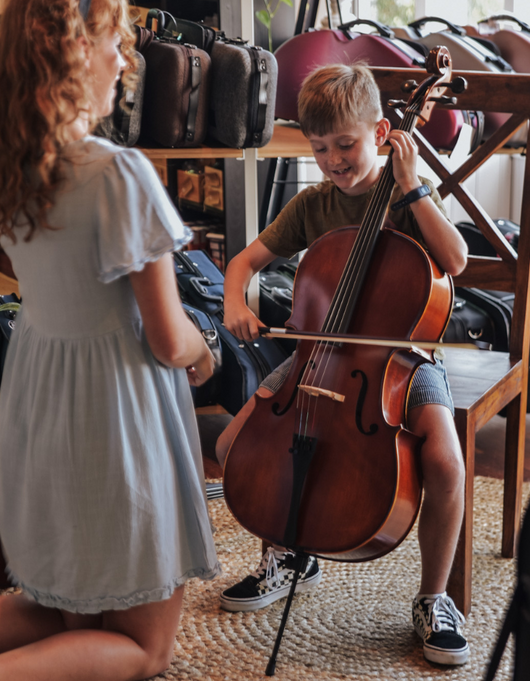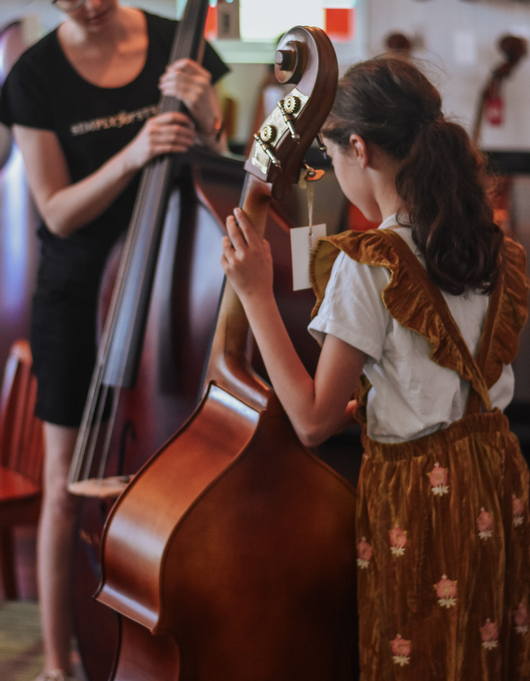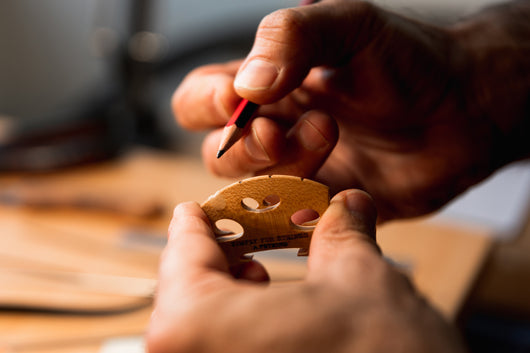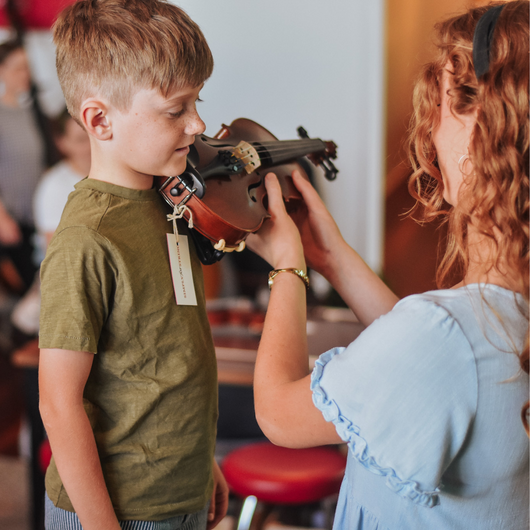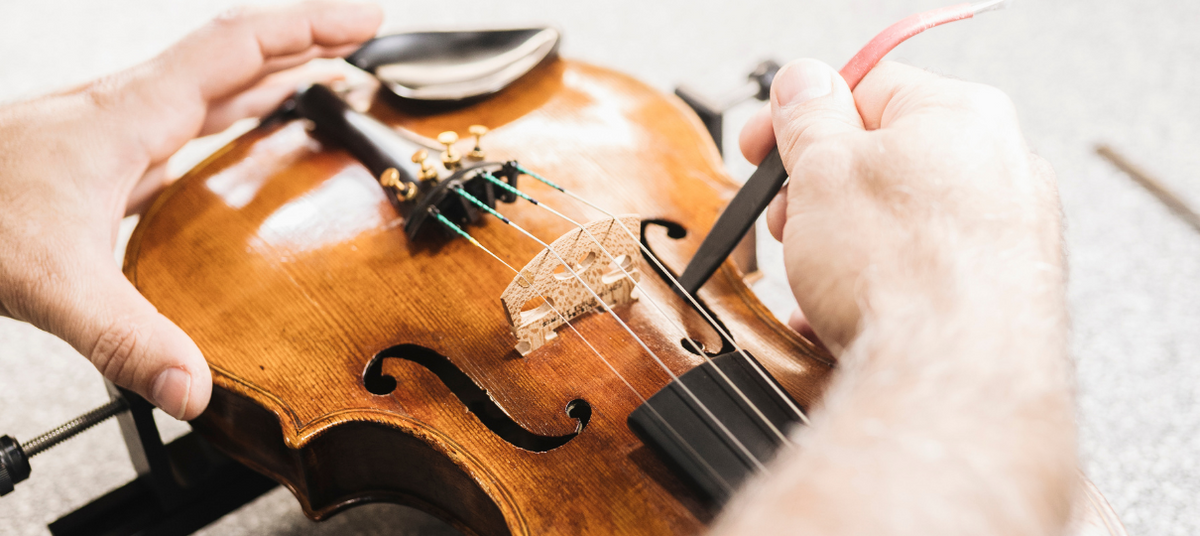You might be surprised to know that some companies just sell you the instruments the way they receive them from China, Europe, or wherever. The chances of these working properly are certainly not good. A poorly adjusted instrument is guaranteed to increase bad technique and can be a nightmare to keep in-tune. Low price alone is not true value. We combine both low prices and better instruments that will not only last longer but enhance your performance skills as well.
Adjusting a poorly set up instrument can end up costing hundreds of dollars. You should never consider buying an instrument that has not been expertly adjusted by a trained violin maker or luthier.
The Bridge
Each bridge must be hand cut with the correct curve and be fitted individually to each instrument. A carefully fitted bridge allows the strings to vibrate freely without touching the fingerboard and maintains them at the proper height for easy playing. Look out for Aubert and Despiau bridges - these high-quality bridges have been used by luthiers across the globe for hundreds of years.
The Nut
The nut should have the correct height and spacing to ensure that the strings do not touch the fingerboard so there is no “buzzing” sound when the instrument is being played. The nut should be smooth to the touch and not bumpy in any area. The strings should be evenly spaced to ensure excellent playability.
The Fingerboard
The fingerboard must be accurately trued and aligned, smooth and straight, with the proper curvature and correct length and thickness. Fine ebony, not hardwood or plastic. The ebony should not be stained or varnished, only lightly oiled. The strings must be checked for correct height starting at the nut and on to the bridge.
The Pegs
Fine quality ebony or rosewood pegs individually fitted for smooth easy turning and ideal holding tension. They must be correctly spaced both in relation to one another and not too close to the back of the peg box. Wittner Space Age pegs are a fantastic option for musicians in hot and humid climates. Plastic pegs will simply not work.
The Soundpost
Each soundpost is hand fitted to the instrument and properly placed to produce the maximum balance of tone quality and volume. Soundposts fitted abroad by the manufacturers are not usually carefully fitted and placed in proper relationship to the bridge. This is why we do this in our shop.
The Tailpiece
These must be sized in proportion to the size of the instrument as it is the link between the end button and bridge. Historically, the tailpiece has been made of the same material as the pegs and end button, which is usually ebony in the case of the student instrument. However, now fine tailpieces are made of new very strong, lighter materials with string adjusters built-in.
The String Adjusters
The new Wittner tailpieces have the string adjusters (tuners) built-in. If wood tailpieces are used, we install only the finest quality adjusters, attached firmly to eliminate any chance of buzzing. Older style tailpieces often have heavier adjusters that can diminish the sound in part and could potentially cause damage to the varnish. Avoid these where possible.
The Chinrest
A fine quality chinrest must be well-shaped for comfort and balance and attached to the instrument securely. You may need to change the chinrest from the generic chin rest style that comes with most instruments to ensure optimal comfort.
Final Inspection
All instruments undergo a final inspection by the staff at Simply for Strings. This assures that the instrument meets or exceeds all specifications.
Many clients say the primary reason for using our instruments is our set up.
Plan your visit to our Red Hill store today.





